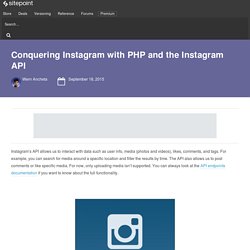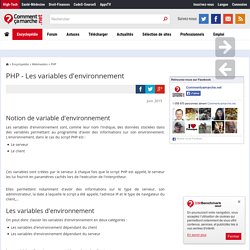

How to use Eloquent ORM migrations outside Laravel - siipo.la dev blog. Laravel's Eloquent is one of the most fluent and expressive ORM's available for PHP.

However, unlike some of its competitors like Doctrine or Propel, it's highly tight to the Laravel ecosystem in some ways. It's still possible to use Eloquent outside Laravel with a bit of work. In this example, we are using Slim Framework, but most of the code will work in any framework of your choice, even in plain PHP if you are into that. If you use Eloquent outside Laravel, you will be missing one of it's best features: database migrations. Using migrations you can store your database structure in code.
There has been some effort in order to use Laravel migrations outside the framework, but it hasn't been possible because the migrations require a complete instance of Laravel to run. Installing packages We are using Composer to manage our packages so you need to have Composer installed. Composer require 'slim/slim:3 composer require 'illuminate/database:5.2 composer require 'robmorgan/phinx:0.5 <? <? Login with Facebook OAuth Using PHP. In this tutorial we are going to implement Login with Facebook OAuth Using PHP.

I have implemented Facebook OAuth login with different version of PHP SDK. I have used latest latest Facebook PHP SDK 4 in this tutorial. Please continuing this tutorial, Please refer my previous tutorial on 1. Conquering Instagram with PHP and the Instagram API. Instagram’s API allows us to interact with data such as user info, media (photos and videos), likes, comments, and tags.

For example, you can search for media around a specific location and filter the results by time. The API also allows us to post comments or like specific media. For now, only uploading media isn’t supported. You can always look at the API endpoints documentation if you want to know about the full functionality. API Calls and Limits There are two types of API calls you can perform with the Instagram API: Unauthenticated and Authenticated. Before we move on, it’s important to understand that there are limits to this API. Registering an Application Needless to say, you need to have your own Instagram account in order to work with the Instagram API. Next we have to register an application. If you have already created an app previously, then it leads you to the app management page which lists all your existing apps.
Ngrok http 80. Eloquent JavaScript Second edition. Defensive Programming in PHP. Finagle’s Law of Dynamic Negatives: Anything that can go wrong, will – at the worst possible moment.

What Does “Defensive Programming” Mean? Defensive programming, simply put, is programming with the intent to anticipate likely failure points. The goal is to circumvent those likely problems before they occur. You see the problem, right? There’s something inherently difficult with the advice “expect the unexpected” and it’s made many times worse when one alters it to “expect the unexpected and try to prevent it”. Let’s look at some practical examples.
Conditional Statements This is one of the easiest places to program defensively, and one where it’s easiest to be complacent. Hypothetically, you are working on a function and need a conditional. There are no other possibilities, you say, and you move on with your code. Never Trust User Input. PHP - Les variables d'environnement. Juin 2015 Notion de variable d'environnement Les variables d'environnement sont, comme leur nom l'indique, des données stockées dans des variables permettant au programme d'avoir des informations sur son environnement.

L'environnement, dans le cas du script PHP est : Le serveur Le client Ces variables sont créées par le serveur à chaque fois que le script PHP est appelé, le serveur les lui fournit en paramètres cachés lors de l'exécution de l'interpréteur. Elles permettent notamment d'avoir des informations sur le type de serveur, son administrateur, la date à laquelle le script a été appelé, l'adresse IP et le type de navigateur du client,... Les variables d'environnement On peut donc classer les variables d'environnement en deux catégories : Les variables d'environnement dépendant du client Les variables d'environnement dépendant du serveur.